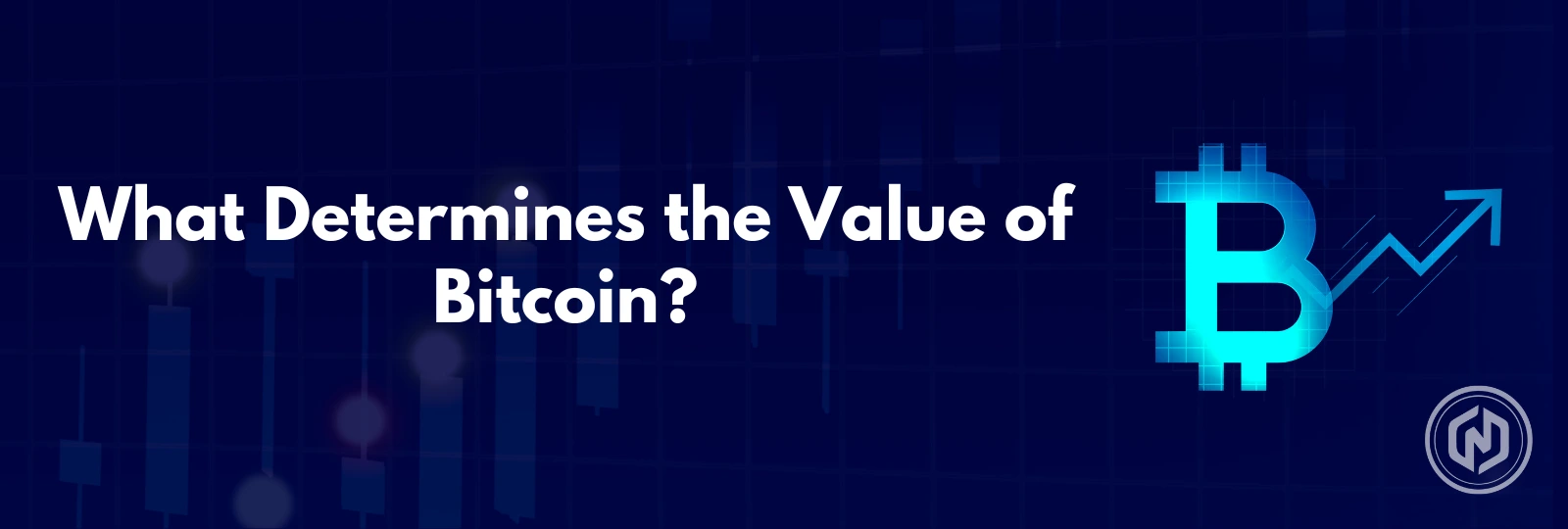Bitcoin is known for being the pioneer in the cryptocurrency market, whose value is primarily determined by supply and demand dynamics. However, the question – ‘How is the value of Bitcoin determined?’ is still lingering among many crypto enthusiasts. This article is created to clear such doubts and explore the main factors that are influencing the Bitcoin price. Even though there is only a limited supply of Bitcoin of around 21 million, the scarcity of the coin increases naturally. Events that halve Bitcoin, which happens about every four years, lower mining incentives, further restricting new supply and usually raising prices. The value of Bitcoin is also significantly influenced by manufacturing costs, market demand, legislative changes, and competition from other cryptocurrencies.
Supply and Demand for Bitcoin
Bitcoin’s price is mostly determined by the dynamics of supply and demand. Bitcoin is a rare commodity. When Bitcoin demand is strong, the restricted quantity of coins rapidly diminishes as new ones are minted, pushing prices upward. Events like the Bitcoin halving, which lowers miners’ payouts and gradually diminishes Bitcoin supply, increase this shortage.
Numerous variables, like institutional acceptance, investor mood, and global economic conditions, impact the demand for Bitcoin. The demand for Bitcoin will increase frequently when institutions express interest in it or when the economic volatility increases. Prices usually rise as a result of this fixed supply and growing demand. In contrast, Bitcoin price fluctuations may happen to show a decrease in price if few buyers enter the market when demand declines or if any barriers appear due to regulatory changes.
Bitcoin Scarcity and Its Influence on Price
How does Bitcoin scarcity influence price? Well, when something is scarce, there is a demand for it, and gradually, the price for that particular object will increase. One of the main reasons for Bitcoin scarcity is due to its limited availability of only 21 million coins. This scarcity is designed to resemble that of precious metals, such as gold so that there are fewer coins accessible, which increases demand. The Bitcoin halving procedure, which takes place about every four years, further limits the amount of new Bitcoin that may be sold. Even halving cuts miner payouts in half, which means that even while demand could keep rising, there will be less Bitcoin coming in.
Bitcoin halvings have increased market scarcity, which has affected price hikes. Past halvings, for example, have resulted in significant price increases both before and after each occurrence, as more investor demand and less supply constraints combine. This combination of stable demand and restricted supply supports Bitcoin’s allure as a store of wealth gradually.
Bitcoin’s Stock-to-Flow Model for Price Projection
Bitcoin price prediction can be done using the well-known Stock-to-Flow (S2F) model, which compares the entire supply (stock) to the yearly production rate (flow) to determine how scarce the cryptocurrency is. Because of its restricted supply and regular issuance schedule, the concept, which was first used to evaluate precious metals, acquired appeal in the cryptocurrency space. Bitcoin’s “stock,” which has a maximum of 21 million coins, increases more slowly over time, particularly during halving events that cut miner payouts in half every year. This decreases the amount of fresh supply coming into the market, making it more scarce.
After every Bitcoin halving, Bitcoin’s Stock-to-Flow ratio increases, indicating a potential price increase as supply becomes more scarce in comparison to demand. S2F has disadvantages, especially in its absence of demand considerations and susceptibility to external market shocks, despite its correlation with previous price increases.
Market Inflation & Deflation Trends
Inflation and deflation are macroeconomic issues that have a big impact on the Bitcoin price. When the buying power of money decreases due to inflation, investors frequently look for assets that will hold or grow in value. Since excessive supply cannot depreciate Bitcoin, it is regarded as a buffer against inflation. Even during times of inflation, demand may be stimulated by the scarcity created by this constrained supply. Although some research indicates that Bitcoin tends to do better during inflationary times, its relatively short history implies that the long-term performance of the value of BTC in different economic scenarios is yet unknown. To reduce the risks that are associated with its price swings, investors prefer using Bitcoin as a hedge against inflation and approach it as a component of a diversified portfolio.
Other Factors Determining Bitcoin Value
Apart from the scarcity, which leads to the supply and demand of Bitcoin, some other factors are also important in determining the value of Bitcoin. Numerous variables affect Bitcoin’s volatility, which makes price changes unpredictable. Important factors include regulatory effects, which have the power to significantly alter market sentiment. For example, promises of crackdowns or laws that support them frequently cause notable price fluctuations. A part is also played by technological developments; while network upgrades for Bitcoin might increase its utility, they could not immediately stabilize its price. As traders respond to news and trends, market emotions also fuel speculation, which increases Bitcoin volatility. The complicated environment created by these factors allows for significant price fluctuations for Bitcoin in reaction to both internal and external demands.
Conclusion
It is essential to comprehend Bitcoin’s volatility to forecast future values and make wise investing decisions. Several factors, including investor attitude, market demand and supply dynamics, legislative changes, and technological breakthroughs, have a big impact on how much Bitcoin costs. Market sentiment will also be impacted by outside factors like media coverage and macroeconomic changes. Investors should look out for these factors in order to manage the unpredictability of Bitcoin, as doing so can reduce risks and increase profit.

